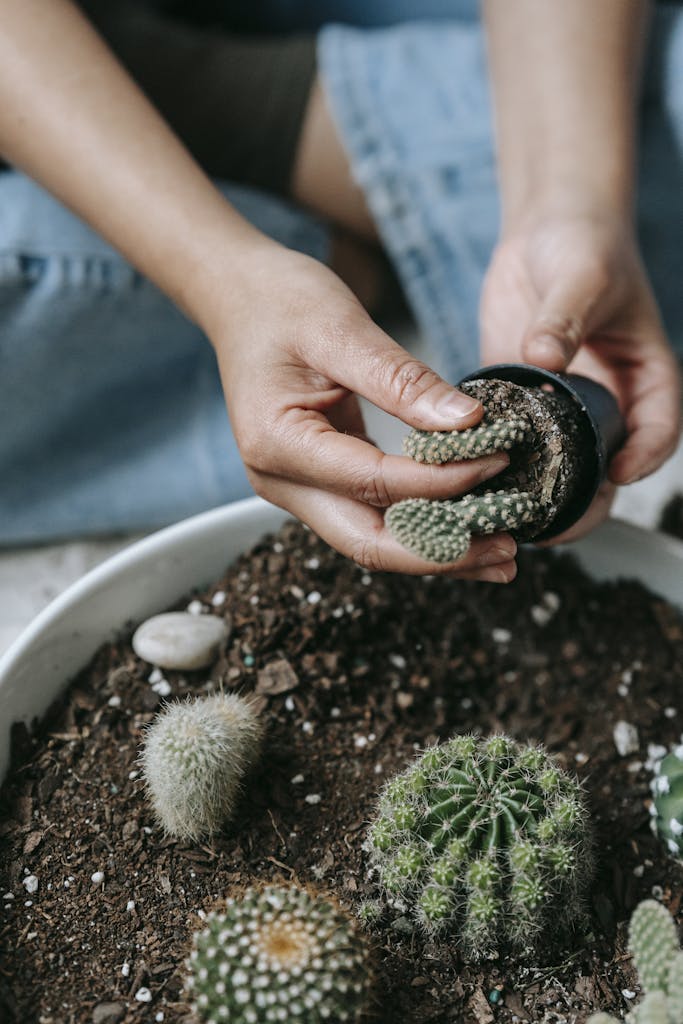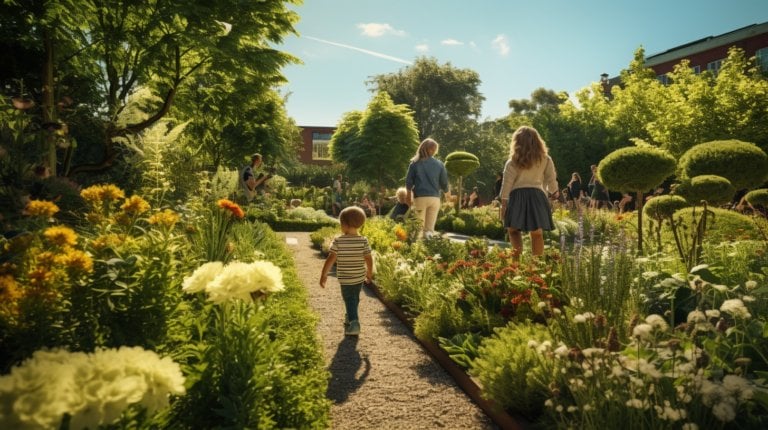What to Do with Leftover Concrete: Creative and Practical DIY Uses
Consistently seeking innovative methods to reuse materials, particularly in handling surplus concrete.
Recently, I’ve been experimenting with leftover concrete, and you’d be surprised at its versatility! From sleek furniture to unique garden decoration and practical home fixes, there’s a lot you can do.
So, if you’re like me and love turning the old into new, I’ll show you how to make the most of your concrete. Let’s dive in, shall we?
Key Takeaways
- Use leftovers to create DIY concrete decorations and sculptures, such as planters, candle holders, sculptures, coasters, and side tables.
- Modify the concrete mix by adding pebbles for texture, pigments for color, different aggregates for variety, adjusting the water-to-cement ratio for desired consistency, and using additives for specific properties.
- Follow safety tips when working with concrete, including dressing appropriately, wearing heavy-duty gloves, following safety guidelines and instructions, avoiding rushing the process, and taking necessary skin and eye protection precautions.
- Repurpose concrete into functional furniture, such as coffee tables, bookends, benches, sideboards, and lamp bases.
What to Do with Leftover Concrete? Discover the Art of DIY

I will show you how to transform concrete into stunning Do It Yourself projects.
We’ll explore creative ideas for concrete decoration, learn how to modify your mix for versatile applications, and I’ll share my top safety tips for working with concrete.
Unleash Your Creativity: DIY Ideas for Concrete Décor
I’ve discovered that leftovers can be a goldmine for Do It Yourself home projects, turning what might seem like waste into a versatile design element. Let’s explore how you can unleash your creativity with these ideas for concrete decoration.
Create Concrete Planters: This is a great way to give your indoor or outdoor plants a unique home. Mold the concrete into your desired shape. Let it dry, then remove the mold.
Make Candle Holders: This project is simple yet elegant. Pour the concrete into a mold and insert a candle before it dries. Once dry, you have a beautiful, rustic candle holder.
Customization at Its Best: Modify Your Mix for Versatile Application
With leftovers and a little creativity, I can modify my mix for many applications, creating unique, personalized pieces for my home. This Do It Yourself approach not only helps to use concrete but also allows me to tailor each concrete project to my specific needs.
By understanding the properties of my extra concrete, I can manipulate its texture or color, making my projects truly bespoke. Perhaps I can add some pebbles for a rougher surface on a green path or mix some pigment for a vibrant plant pot. The key is to experiment and not be afraid to modify your mix.
Safety First: Tips for Working with Concrete Safely and Effectively
While diving into Do It Yourself projects with concrete is exciting, I must prioritize safety to ensure I’m working effectively and without harm. In the realm of construction, safety first: tips for working with it safely and effectively can make the difference between a successful project and a dangerous situation.
Here are a few key safety tips when dealing with the concrete in any construction project:
Dress Appropriately
- Wear sturdy, closed-toe shoes
- Use heavy-duty gloves to protect your hands
Handle Concrete with Care
- Never rush the process
- Always adhere to safety guidelines and instructions
From Slab to Slim: Repurposing Concrete into Functional Furniture

I’ve found an exciting way to use extra concrete: turn it into functional furniture! This might sound daunting, but with a little creativity, you can handcraft everything from strong coffee furniture to chic bookends.
It even gives a modern, minimalist feel that’s very much in style.
Sturdy and Edgy: Build a Concrete Coffee Table
Let’s dive right into how you can transform the leftovers into sleek and strong coffee furniture.
An edgy Do It Yourself project like this not only repurposes materials but also adds a unique, industrial feel to your living space.
Here’s a simple guide to build your own masterpiece:
Prepare Your Materials
- Gather your concrete, ensuring it’s clean and debris-free.
- Acquire a mold of your desired size.
Build
- Pour it into the mold.
- Allow it to cure properly before removing it.
That’s it! With a bit of patience and creativity, you can turn that concrete into a strong, edgy coffee table that’s sure to impress.
Sensibly Chic: Craft Concrete Bookends for Your Study
Not only can I utilize every bit of my concrete, but I can also fashion it into chic and useful bookends for my study. This may seem daunting at first, but anyone can make one with the right tools and mindset.
First, I cut it into smaller, book-sized pieces. Then, I sand them down for a sleek finish. It’s an opportunity to get creative with shapes and designs. The trick is to keep them heavy enough to hold the books yet slim enough not to overpower my study’s aesthetic.
Toward Minimalistic Design: Achieve a Modern Aesthetic with Concrete Furnishings
Both a small amount of creativity and a heap of concrete can turn into minimalist, modern furniture that enhances any living space. This is all about simplicity, cleanliness, and functionality, which it effortlessly delivers. Here’s how to get started:
Plan Your Design:
- Sketch different shapes and sizes; remember the beauty of minimalistic design lies in simplicity.
- Calculate the amount of concrete you’ll need for each piece.
Prepare and Pour:
- Build your molds using repurposed materials.
- Pour the concrete carefully and let it cure completely.
Embrace this unique approach to reuse and repurpose concrete. It’s a tangible way to add a modern feel to your home and showcase your creative prowess.
Concrete Can Bloom: Planters and Garden Decor Made from Leftovers

Now, let’s focus on making our greens bloom with concrete.
From creating aesthetically pleasing planters for our plants to edging our spaces, there’s a lot we can do.
We can even handcraft some unique accessories and statues to add a touch of art to our backyards.
Go Green: How to Build Concrete Planters for Your Greenery
I’ve got a great idea for using up some of that leftover: let’s build a few unique plant containers to add a touch of greenery to our space. These are perfect for open-air settings and can add a rustic charm to any garden.
Here’s a simple guide:
- Gather your materials
- We’ll need the concrete, a mold for the container, and some plants.
- Follow these steps:
- Prepare the mold and pour it into the concrete.
- Once it’s set, remove the mold, and there you have your planter!
This project not only reuses waste but also contributes to a greener environment by providing a home for your plants. Let’s breathe life into concrete leftovers and watch our greens bloom!
Curious about cement pots’ impact on plant growth? Explore our blog on creative concrete uses and discover if cement pots are good for plants!
Adding an Edge: Use Concrete to Border Your Garden Spaces
In the spirit of creativity, let’s explore how we can add an artistic flair to our spaces by utilizing concrete. By using concrete, you can create a sophisticated border around your spaces. This not only enhances the aesthetics but also provides a clear distinction of your area.
Now, the question arises: how exactly do you utilize concrete to achieve this? It’s simpler than you’d think! First, you’ll need to lay out your desired flair, marking the area where you want to place your concrete border.
Then, pour your concrete into this marked area and smooth it out. Once it dries, you’ll have a beautiful, durable border around your spaces. Voila! A creative use for your leftovers!
Art in the Backyard: Do It Yourself Concrete Statues and Garden Accessories
How about we transform that pile of leftovers into stunning concrete statues and accessories to enhance our backyard’s aesthetic appeal? With a bit of creativity and a mold, you can make art in the backyard that not only saves money but also reduces waste.
Here’s my approach:
1. Do It Yourself Concrete Statues
- Find a design you like.
- Fill it with concrete.
- Once hardened, remove the statue from it.
2. Accessories
- Use concrete to create stepping stones, bird baths, or planters.
- For a rustic look, leave the concrete as is or paint for a colorful touch.
Heat It Up: Make a Statement with Concrete Fire Pits and BBQs

Now, let’s heat things up a bit!
Did you know you can transform concrete into stunning fire pits and BBQ surfaces?
This is a fantastic way to not only recycle but also add some flair to your outdoor space!
Warmer Evenings: Step-by-Step Guide to a Do It Yourself Concrete Fire Pit
I will show you a guide to creating your very own concrete fire hole using just a few leftover materials. This project is a great way to repurpose concrete and perfect your concrete construction skills.
Here’s what you’ll need:
- Concrete
- A mold for your Firehole
Here’s how to do it:
1. Prepare your mold
Make sure it’s clean and dry.
Apply a release agent to make it easier to remove the concrete.
2. Pour the concrete into the mold
Make sure it’s evenly distributed.
3. Let the concrete set
This can take anywhere from 24 to 48 hours.
4. Remove your new fire hole from the mold
Be careful not to damage the concrete.
In no time, you’ll be enjoying warmer evenings by your own fire hole.
Spice Up BBQs: Build a Sturdy Concrete Cooking Slab
Let’s heat things up using concrete by building a strong, stylish cooking surface for your next BBQ. This project not only gives your BBQs a unique touch but also puts that extra concrete to good use.
Start off by creating a mold for it. Ensure it’s strong and level to ensure an even surface for grilling.
Once it is ready, pour in your concrete. Use a trowel to smooth the surface.
As the concrete dries, you can add personal touches like your initials or a fun design.
After curing, it will be ready for BBQs. It’s not just a cooking space; it’s a statement piece!
Retrofitted Warmth: Remodeling Your Existing Firepit with Concrete
Let’s turn our attention to remodeling your existing firepit with that concrete, giving your backyard a warm, retrofitted appeal. I’m sure you’re eager to add a touch of warmth to your outdoor space, and what better way than to retrofit your firepit? It’s a brilliant way to use your concrete, adding a unique, rustic charm to your backyard.
Here’s how you can do it:
- Prepare your firepit
- Clear any debris or old fire material
- Level the base for even application
- Apply the concrete
- Mix the concrete as per instructions
- Pour it over the firepit, let it set
On the Road: Using Leftover Concrete for Driveway and Pathway Repairs

Let’s hit the road and talk about utilizing leftovers to fix driveways and pathways.
I’ll share some simple steps to repair pesky potholes and rebuild those worn-out borders and curves.
We’ll also touch on safety measures like proper sealing and surface preparation for concrete repairs.
Fixing Potholes: Simple Steps to Repair Your Driveway with Concrete
I’ve devised a nifty way to patch up those pesky potholes utilizing leftovers. This handy process can save you time and money, and it’s a great way to use up that ready-mix concrete you might’ve left over from other home improvement projects.
Here is how:
Prepare your driveway:
- Clean out the potholes.
- Dampen the area with water.
Make your concrete mix:
- Use ready-mix concrete.
- Follow package instructions to get the right consistency.
Finally, pour the mix:
- Pour your concrete mix into the potholes.
- Smooth it out with a trowel.
Boom! Drive Path repaired. You’ve mastered the art of reusing concrete for practical purposes.
Smooth Transitions: Rebuilding Edges and Curves of Walkways with Leftover Concrete
After fixing potholes, I’m now turning to the borders and curves of walkways, utilizing concrete to rebuild them and create smooth transitions.
It starts with ready-mix concrete. The wet concrete is poured along the borders, filling any cracks or gaps. Then, it’s all about shaping it. I use a trowel to form the desired curve, ensuring it blends seamlessly with the existing slab.
The key is to work while the concrete is still wet, as it sets quickly. It’s a bit of an art, but with practice, you can shape the concrete to your exact specifications.
Safety Measures: Proper Sealing and Surface Preparation for Concrete Repairs
Before diving into the process of utilizing concrete for driveway and pathway repairs, I must emphasize the importance of safety measures and proper surface preparation, as they’re the foundations of any successful repair job.
Safety Measures:
- Always wear appropriate protective gear while handling excess concrete.
- Ensure your work area is clear of any hazards that might pose a risk during concrete repairs.
Surface Preparation and Proper Sealing:
- Ensure the surface is clean and dry before applying the concrete.
- Apply a proper sealing coat after the repair to protect the surface and enhance the longevity of the repair.
After exploring creative uses for leftover concrete, discover whether galvanized steel is safe for your vegetable garden – your garden’s health matters!
Frequently Asked Questions
How Can I Safely Dispose of Leftover Concrete if I Don’t Want to Repurpose It?
I’d contact a local recycling center if I’ve got leftovers I don’t need. They often accept clean-fill materials. I’d hire a waste disposal service if that’s not an option.
Are There Any Environmental Impacts to Consider When Repurposing Leftover Concrete?
There are environmental impacts to consider. Repurposing concrete reduces waste in landfills, lowers carbon emissions from new production, and conserves natural resources. It’s a win-win for me and the environment!
What Kind of Tools Are Needed to Break Down and Reshape Leftover Concrete?
I’d need a sledgehammer, chisel, and safety gear to break down and reshape leftovers. For reshaping, a mold or formwork is crucial. I’d also need a concrete mixer to mix the concrete thoroughly.
Can It Be Used in Creating Indoor Home Decor?
I’ve used leftovers to create a unique indoor decoration. It’s perfect for crafting planters, candle holders, or even bookends. Just make sure it’s properly sealed to prevent dust and residue.
Are There Any Safety Precautions to Consider When Working With Leftover Concrete?
Safety precautions are crucial when handling leftovers. I always wear protective gear like gloves and goggles to prevent skin and eye irritation. Additionally, I ensure adequate ventilation in my workspace.
Conclusion
So, don’t let that leftover go to waste! Embrace your inner Do It Yourself enthusiast and transform it into functional furniture or unique garden decor.
Why not take it a step further and create a standout concrete fire pit or BBQ? Even common driveway or pathway repairs can be tackled.
Remember, with a little creativity and elbow grease, what once was leftover can become a cherished piece of your home.







